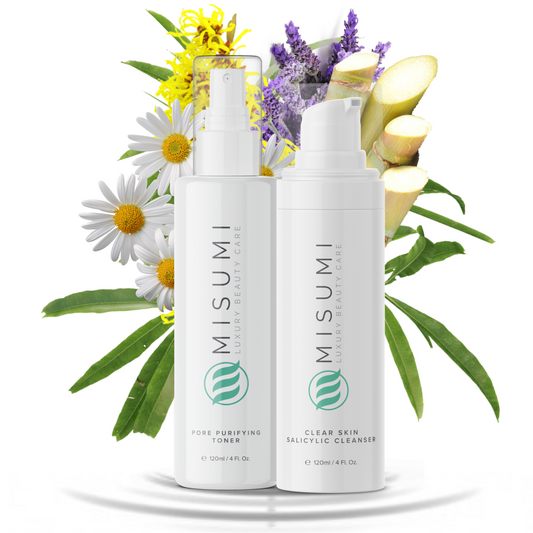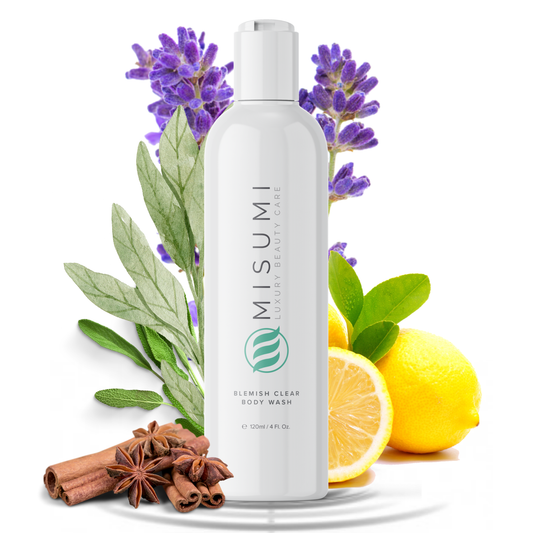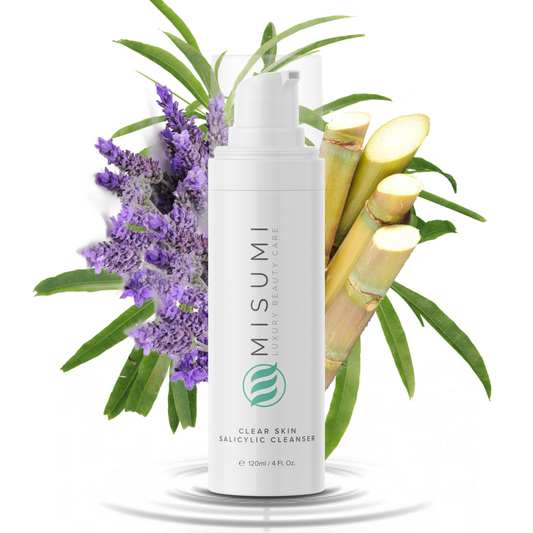If you are browsing for ways to drain a cyst, that means you are already uncomfortable, maybe even in pain and decided to take action against those horrible bumps under the skin.
Well, who are we to change your mind?
Just to be on the safe side, however, we’ll offer you a few important tips.
Should You Drain Cysts With a Needle?

Not all cysts are equal, and the first step you need to do is identify what you are dealing with, how serious it is, and what consequences you might experience. If you are not sure, please just go to the doctor. Some types of cysts require medical attention or even surgery.
In general, the rule of the thumb is, if it’s larger than a pimple, deep, red and hot to the touch - consulting a doctor is the smartest decision. In these cases, it’s most likely that the cyst is inflamed - irritating it can easily cause a bad infection.
Here’s a guide on how to identify the type of cyst you’re dealing with. Once you gauge whether you should test your luck alone or leave it to a professional, you can read about cyst draining procedures with a needle - in a doctor's office and at home.
Types of Cysts
Epidermoid cysts
An epidermoid cyst is a small, slow-growing, benign cyst usually found on the face, neck, back or genitalia. It can either have no other symptoms or it can be a little painful on touch. In most cases, a protein called keratin builds up under the skin and causes this type of epidermoid cyst, and it usually happens as a response to skin trauma, infections, acne, or even sun exposure. It can look tan to yellow in color, and it’ll be filled with thick, smelly matter.
An epidermoid cyst is more likely to develop in people with acne or other skin conditions. In most cases, this type of cysts doesn’t cause long term problems. Draining the cysts can cause infections, so the best solution would be to leave it alone or visit a dermatologist. Also, it’s likely that the cyst will grow back after being drained.
Sebaceous cysts
 A sebaceous cyst is very similar to the first type - a small lump under the skin that doesn’t cause pain and grows really slow. They are caused by hair follicles, which differs them from epidermoid cysts that are caused by skin cells. Usually, they can be safely ignored, but some people decide to seek treatment since they can look bad cosmetically. In most cases, no complications or side effects occur after draining or removing the cysts surgically.
A sebaceous cyst is very similar to the first type - a small lump under the skin that doesn’t cause pain and grows really slow. They are caused by hair follicles, which differs them from epidermoid cysts that are caused by skin cells. Usually, they can be safely ignored, but some people decide to seek treatment since they can look bad cosmetically. In most cases, no complications or side effects occur after draining or removing the cysts surgically.
Pilonidal cysts
A pilonidal cyst usually contains hair and skin debris and is almost always located near the tailbone at the top of the cleft of the buttocks. Most at risk are young men that spend a lot of their time in a seated position. If a pilonidal cyst becomes infected, it is often extremely painful. I have heard a veteran nurse once say that she had seen a lot of people in pain and that an infected pilonidal cyst is quite possibly one of the most painful experiences. It usually consists of a small hole in the skin that when infected fills with pus.
Don’t leave pilonidal cysts without treatment - just don’t. If you suspect you might have it, rush to the dermatologist. The cyst can be drained through a small incision or removed surgically. It’s not recommended to try to drain the cyst yourself - and are you sure you want to subject yourself to that kind of pain anyway?.
Ganglion cyst
These cysts appear as round lumps around the tendons or joints in the body. Inside, they’re usually filled with a thick, sticky, colorless, jellylike material. The causes of these cysts remain unknown, although injury or trauma can sometimes be the reason. Women are more at risk. This type of cyst is not harmful and accounts for about half of all soft tissue tumors of the hand, according to WebMed.
Cystic acne
 Cystic acne is the most severe form of acne. They occur when a cyst forms underneath the skin as a result of a concoction of excess sebum, bacteria and skin cells. You can develop cystic acne at any point in your life and potentially can manifest all over your body - the chin, the neck, the back - practically anywhere.If you want to remove the cyst fast, ask your dermatologist to drain it.
Cystic acne is the most severe form of acne. They occur when a cyst forms underneath the skin as a result of a concoction of excess sebum, bacteria and skin cells. You can develop cystic acne at any point in your life and potentially can manifest all over your body - the chin, the neck, the back - practically anywhere.If you want to remove the cyst fast, ask your dermatologist to drain it.
The procedure is usually done with a sharp needle. When performed properly, it can reduce pain, swelling, and scarring as well.
It's not advisable to try draining a cyst or abscess yourself. Instead, try a different and natural alternative. Try applying a hot, wet compress to the cyst a few times daily. The heat will help draw the pus out, helping the cyst to come out. This can reduce pain and itching. Try soaking the area in warm, shallow water.
Breast and ovarian cysts are also a really common type of cysts, but they’re not visible on the epidermis.
Method one: Cyst Aspiration

The safest way to drain a cyst is to go to your dermatologist and let them do the magic.
First, your doctor will examine and diagnose the cyst. This is really important since some cysts can be dangerous and require surgical removal. If the cyst causes a lot of pain or limits your day-to-day activities, your doctor will probably recommend aspiration - a procedure where the fluid is drained from the cyst.
During fine-needle aspiration, a thin needle is inserted into the cyst, after the area has been numbed. Your medical provider will drain the cyst's fluids through the needle. Patients usually experience no to minimal discomfort during the procedure.
Now, remember, aspiration will shrink the cyst but it won’t necessarily eliminate it. This is because the “root” of the cyst is connected to the joint or tendon sheath, and since it’s not removed it can grow back. This is also the most likely scenario if you try to drain the cyst at home.
Depending on the severity of the cyst your doctor may do another procedure called “marsupialization.” This is when a drainage tube is placed and left inside the cyst to allow it to continue to drain for a few days.
Finally, the incision is closed and you are ready to go home. Make sure that you follow your doctor’s instructions for caring for the skin after the procedure. You need to watch for signs of infection. These include redness, swelling, pus, and fever. If you notice anything, don’t hesitate to seek medical attention.
Method two: Draining a Cyst at Home

We understand that sometimes medical treatments can be unavailable to someone for certain reasons. Although draining a cyst is something that should be done under professional care if you’ve decided to do it at home here are some steps you absolutely must follow!
Step 1: Sterilize!
Everything! Make sure that you have a clean working environment. Disinfect the surface on which you plan to drain the cyst.
Prepare:
- Medical gloves - Never use your fingers to touch the cyst or needle directly.
- Medical tape - You will need these to help stabilize and secure the bandaging placed over the wound, after draining.
- Alcohol pads - Use them to clean and prepare the skin for injection.
- Cotton balls - use them to clean the area after draining and before you apply bandages or gauze sponges.
- Gauze sponges - To absorb the cyst fluid and use later to cover the wound.
- Sterile needle - To puncture the cyst.
Step 2: Wash your hands and put on medical gloves.
Step 3: Take the alcohol pads and gently clean the area around the cyst.
Step 4: Open the sterile needle and start puncturing the skin over the cyst. You will most likely feel pain and discomfort. Always have someone close to you to help you with the procedure.
Step 5: Start applying pressure around the incision in order to drain the cyst completely. Use a gauze sponge or cotton balls to absorb the excess fluid.
Step 6: Clean the wound with antibiotic ointment or petroleum jelly to keep the surface moist and help prevent scarring.
Step 7: Cover the wound with a gauze sponge and stabilize it with medical tape. You need to make sure you’ve covered the incision well, to keep bacteria away.
Check the wound every day and watch for signs of infection. Every little change or discomfort could be a sign to ask for medical help, so don’t hesitate. Infections can cause a serious health problem.
The wound will most likely take about a couple of days to 2 weeks to heal, depending on the size of the cyst.
Precautions And Prevention

- Depending on the severity of the cyst, you might need antibiotics. Follow the instructions your healthcare provider has given you. If you drained the cyst at home, then call your family doctor to ask for advice on the post-care routine.
- Check your wound every day.
- Never ignore, itching, swelling, redness, pus or fever.
- Keep the cyst opening clean by washing and showering daily.
- Don’t wear tight clothes that might irritate the area around the cyst.
- You may use over-the-counter pain meds to control the pain unless your doctor has prescribed you another type of medication.










